

Introduction
The rock of the Sydney Opera House!
Tarana Granite has been employed as an important monumental stone in NSW including use in the Sydney Opera House and the ANZAC Memorial in Hyde Park in Sydney.
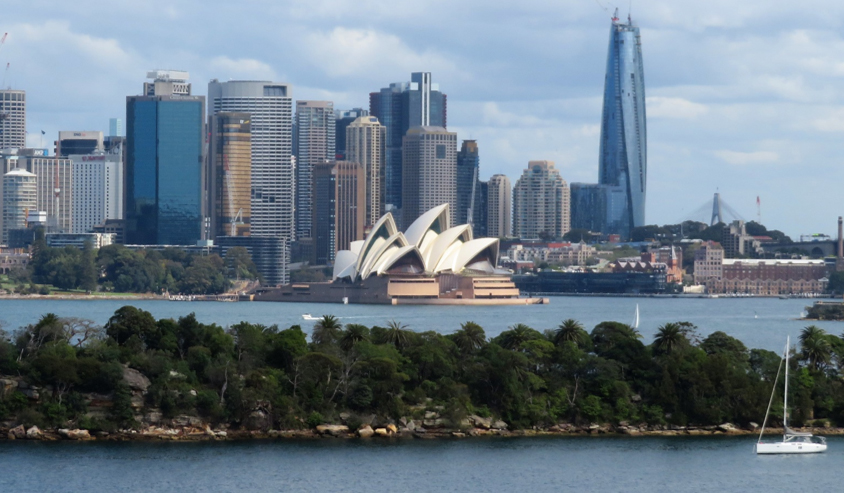
The Tarana Granite is found between Lithgow and Bathurst, New South Wales.
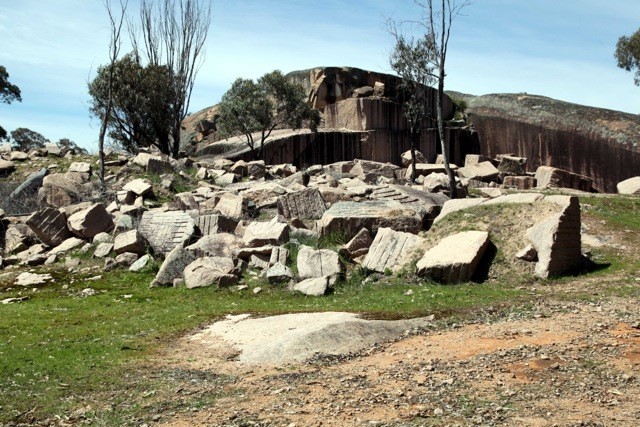
Geological overview
Formed in the Carboniferous (359–299 million years), Tarana Granite is a pink, medium-grained granite, composed largely of quartz and feldspar with minor biotite. This granite body intrudes Silurian age (444–419 million years) volcanics and sediments of the Lachlan Orogen. Regional uplift and extensive erosion created outcrops of the granite as low rounded hills.
Indigenous context
The Tarana Granite is from the eastern part of Wiradjuri Country, which is one of the largest recognised Indigenous land areas in NSW. Following discussion with executive officers of the Bathurst Local Abroginal Council, we learned that the particular region containing this intrusive rock is known to local Wiradjuri people as Buumal.
Modern history
The Tarana Granite is an important monumental stone in NSW, famously used for the lower half of the Sydney Opera House as polished ‘terrazzo’ sheets, as well as pavers and cobblestones in the steps and courtyards of the Opera House. Other monumental uses are the exterior cladding of the ANZAC Memorial in Hyde Park, Sydney and the granite paving of the Forecourt area of Parliament House in Canberra.

The Tarana Granite has an interesting history as a source for construction purposes. It was dismissed in 1929 as ‘a stone which was of so poor a quality as to be unsaleable and unsuitable for building purposes‘ (https://trove.nla.gov.au/newspaper/article/16563745), but it now adorns one of the world’s most iconic buildings. When observing the Sydney Opera House from a distance, it is the pinkish red colour of the vertical panelling made using Tarana Granite which contrasts so brilliantly with the imported Swedish roof tiles.
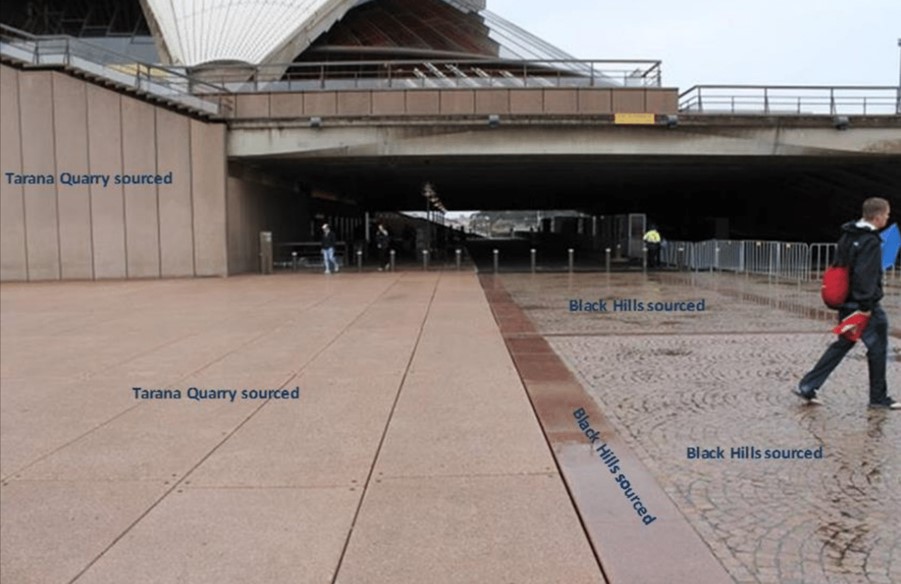
For many decades, Tarana Granite was quarried and crushed from a quarry owned by New South Wales Railways, adjacent to the main western railway near Tarana. It was used as the platform surface for all stations in New South Wales which did not have an asphalt seal. This original quarry is now worked out and abandoned and there are now no granite blocks of any size remaining.
DID YOU KNOW?
Anne Ferguson carved her sculpture ‘Waterfall’ from Tarana Granite in 1977 near the University of New South Wales’s Anzac Parade Gate. Carved vertical lines around the two tonne column create places for rainwater to flow, in the same way ‘the wind and the rain carves grooves into the rocks in the bush’.
A two-tonne block of pink Tarana Granite from a quarry near Orange in NSW was carved in situ at the northern side of the UNSW ANZAC Parade Gate during 1976 and 1977. The artist Anne Ferguson created Waterfall, kindly donating her time and skills. In Australia at this time, it was rare for women sculptors to work in stone. By keeping to University session times, Ferguson gave staff and students the opportunity to see an artist at work and to witness the emergence of Waterfall over 6 months. Carving vertical lines around the granite column she created places for rainwater to flow, in the same way ‘the wind and the rain carves grooves into the rocks in the bush’. The artist then presented the sculpture to the university. It was relocated in 1998, 2010 and 2012. (Text from UNSW Art Collection website: www.artcollection.unsw.edu.au/sculpturewalk.html).
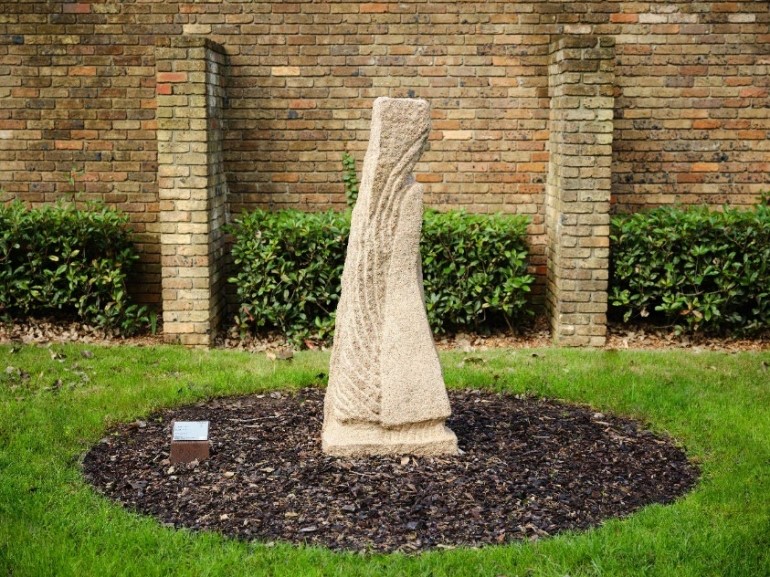
About the NRG specimen
The National Rock Garden specimen came from one of a number of quarries of this granite, located about 30 kilometres southeast of Bathurst. This block was cut to the shape of a rectangular prism and weighs about 11 tonnes.
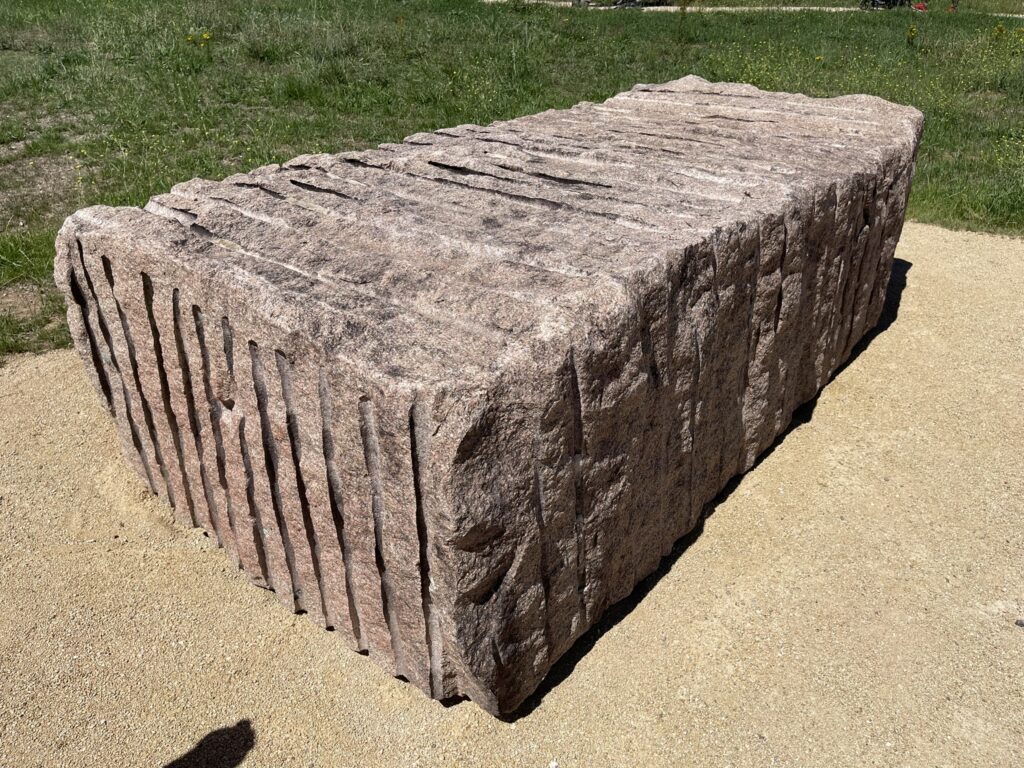
Acknowledgements
Central West geologists Max Rangott and Colin Bembrick assisted in the selection of potential blocks for the NRG. The block was uplifted by Southern Highlands contractor Kraneworx. Funding for the purchase of the rock, its transportation to the NRG site and preparation for display was donated by Berenice and Mike Smith of Collaroy Plateau NSW.
Want to know more?
The following are a selection of references that include a discussion of the Tarana Granite and its geological context.
Chappell, B.W., English, P.M., King, P.L., White, A.J.R., & Wyborn, D., 1991. Granites and related rocks of the Lachlan Fold Belt (1:1 250 000 scale map), Bureau of Mineral Resources, Australia, 1v, map
Glen, R.A., and Walshe, J.L., 1999. Cross-structures in the Lachlan Orogen: the Lachlan Transverse Zone example, Australian Journal of Earth Sciences 46(4), 641–658. https://doi.org/10.1046/j.1440-0952.1999.00734.x
Pogson, D.J. & Watkins, J.J., 1998. Bathurst 1:250 000 Geological Sheet SI/55-8: Explanatory Notes, Geological Survey of New South Wales, Sydney
Verard, C., & Glen, R.A., 2008. Magnetic fabrics of Paleozoic rocks across the Lachlan Transverse Zone from eastern New South Wales, Australian Journal of Earth Sciences 55(8), 1037–1048. https://doi.org/10.1080/08120090801982850
Authors
Mike Smith, Colin Bembrick and Andrew Barrett.


